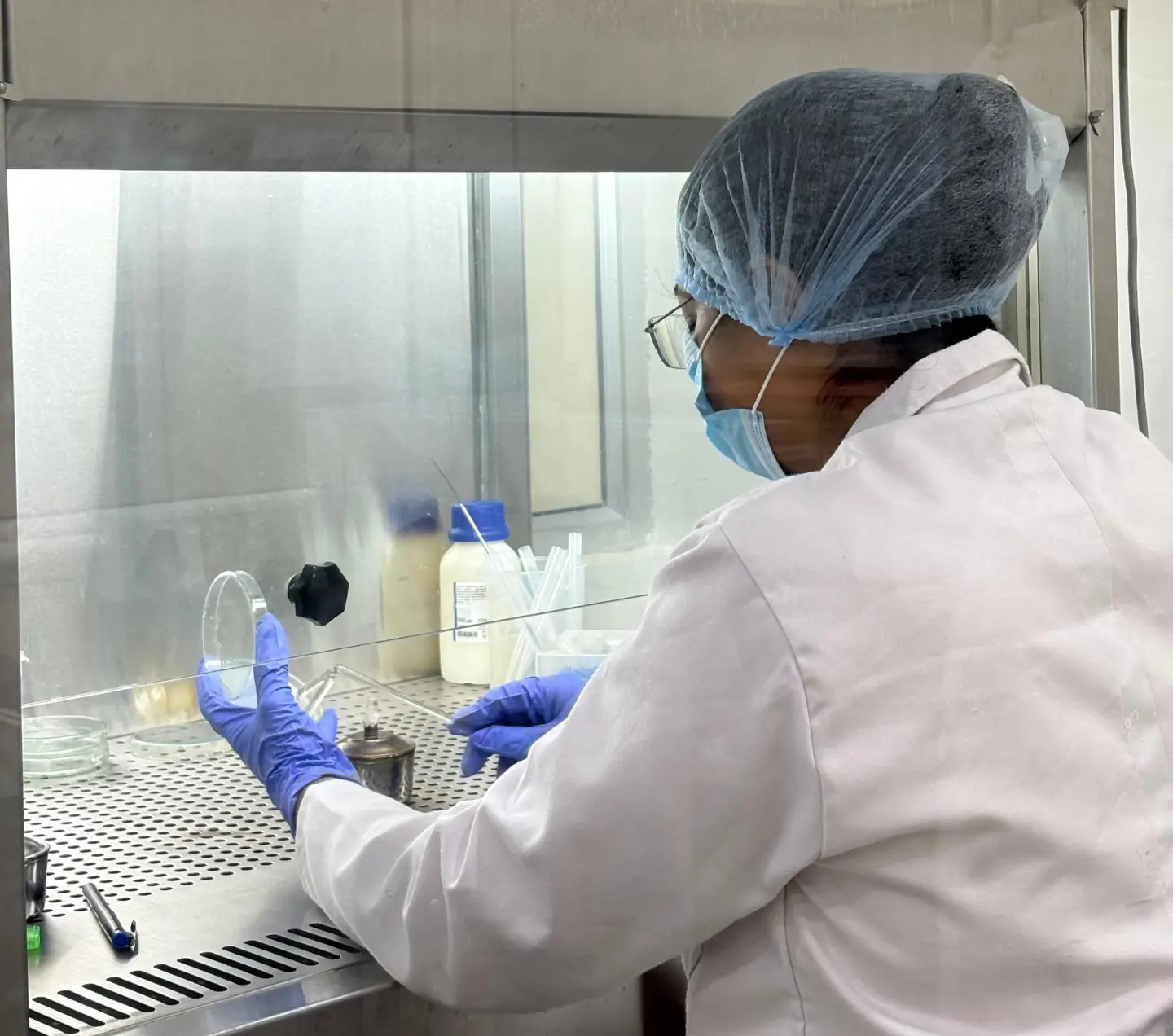Enzyme inhibitors can be defined as molecules that bind to enzymes and decrease their activity. They bind to the active site of enzymes and decrease their compatibility with substrates which causes the inhibition of the Enzyme-Substrate complexes formation. Consequently preventing the production of products by decreasing the catalysation of the reaction. The enzyme activity or the product produced is inversely proportional to the concentration of the inhibitors. This is because as the concentration of inhibitors increase, the enzyme activity decreases. A lot of drugs act as inhibitors because by blocking the activity of enzymes, pathogens can be killed or metabolic imbalances can be corrected. Inhibitors can also be used in pesticides. Inhibitors work in two ways- they either stop the substrate from getting to the enzyme’s active site or prevent the enzyme from catalysing the reaction. There are two types of inhibitors i.e. reversible or irreversible. Reversible inhibitors bond non-covalently and produce varied kinds of inhibition depending on what they bind to- enzyme, the enzyme-substrate complex or both. Irreversible inhibitors, on the other hand, react with the enzyme for example through covalent bonding and change its chemical composition by changing the important amino acids needed for enzymatic activity.
Enzyme inhibitors can exist naturally and are implicated in the regulation of metabolism. Enzymes in the metabolic pathway can be impeded by downstream products. This is called negative feedback which slows down the production line when the products start increasing. It is an essential way of maintaining homeostasis in the cell. Cellular inhibitors can also be proteins which have selective binding and only bind to their target enzyme. This is important in aiding to control the enzymes that damage the cell, for example, nucleases and proteases. A well-known example of this inhibitor is the ribonucleases inhibitor. It works by binding to ribonucleases which is one of the tightest protein-protein interactions. Naturally occurring inhibitors are also used as poison to deter predators against prey or can be used to kill prey. The first step to new drug development is the discovery of new inhibitors. A one way to do this is through trial and error i.e. by screening big libraries of compounds against a chosen enzyme in the hopes of successful leads. The alternative method is the rational drug design method. This makes use of the 3D structure of the active site to postulate which molecules could be potential inhibitors. The hypothesis is tested to determine which is the new inhibitor. The structure of the enzyme is determined through the new inhibitor in an inhibitor-enzyme complex to portray the change made to the enzyme so that the inhibitor can be modified to maximise binding. The cycle of testing and improving is repeated until an adequately strong inhibitor is made.
Why Are Enzyme Inhibitors Important?
They can occur naturally or be produced through pharmacology or biochemistry. They are essential to humans because of their various applications which are listed below:
1. Enzyme Inhibitors Used As Drugs To Treat Diseases:
This is the most common use for enzyme inhibitors because they target human enzymes and try to correct a pathological condition. For example, the drug Viagra contains sildenafil which is an enzyme inhibitor used to treat male erectile dysfunction. Sildenafil strongly inhibits the enzyme (cGMP specific phosphodiesterase type 5) that denatures the signalling molecule called cyclic guanosine monophosphate. Cyclic guanosine monophosphate activates smooth muscle relaxation by allowing blow flow into the corpus cavernosum which leads to an erection. The drug works by decreasing enzyme activity which halts the signal and makes it last longers. Inhibitors are also often used in chemotherapy for cancer. This is because the inhibitor, methotrexate blocks the action of dihydrofolate reductase which is an enzyme implicated in the production of nucleotides. Blocking the biosynthesis of nucleotides is toxic to rapidly growing cells but not toxic to non-dividing cells. This is because the rapidly growing cell has to perform the replication of DNA which is why methotrexate is used in chemotherapy. Anaesthesia and the treatment of myasthenia gravia use reversible competitive inhibitors like edrophonium, physostigmine, and neostigmine. Viral infections can also be cured by inhibitors because they inhibit the viral enzyme protease. This prevents the virus from building new protein coats and they hence cannot replicate.
2. Controlling Metabolism:
Enzyme inhibitors are also used to control metabolism. Uncontrolled enzyme reactions can be fatal. In the disease multiple sclerosis, destructive enzymes attack nerve cells because of the immune system starts to destroy the nerves which causes paralysis. Metabolites inhibit metabolic pathways in the cell. Metabolites regulate enzyme activity by allosteric regulation of substrate inhibition. One example of this is the allosteric regulation of the glycolytic pathway which consumes glucose to produce ATP, pyruvate and NADH. A crucial step for controlling glycolysis is a previous reaction in the pathway which is catalysed by phosphofructokinase-1 (PFK1). When the number of ATP increases, ATP binds to the allosteric site on PFK 1 and decreases the rate of the enzyme reaction which leads to the inhibition of glycolysis and the consequent decrease of ATP production. The negative feedback maintains a stable concentration of ATP in the cell.
Protein inhibitors can also produce physiological enzyme inhibition. This kind of inhibition occurs in the pancreas which produces many zymogens (digestive precursor enzymes).
3. Antibiotics:
Medicines are also used in enzyme inhibition i.e. the enzyme required for the survival of pathogens. An example of this is the antibiotics penicillin and vancomycin which inhibit the enzymes that produce the polymer peptidoglycan. This net-like polymer is the cell wall that surrounds bacteria. If the enzyme is inhibited, the cell wall’s strength will decrease and cause the bacteria to burst. Antibiotics are designed when enzymes that are crucial to the survival of the pathogens are either absent or in a different form in humans. For example, in the example above, humans do not produce peptidoglycan. Hence, inhibitors of peptidoglycan are selectively harmful to bacteria only. By exploiting the differences in the structures of the ribosomes in bacteria or the processes through which they make fatty caids, selective toxicity can be produced.
4. Natural Poisons:
Evolution of plants and animals has to lead to them producing a variety of poisonous substances like peptides, proteins and secondary metabolites that act as inhibitors. Natural poisons are typically small molecules which are so diverse that almost every metabolic process has natural inhibitors. These natural inhibitors not only target enzymes but can also target structural protein functions and receptor channels. Another use for natural poisons, as mentioned above, is for defence against predators or capturing prey. This is because these neurotoxins can cause paralysis and lead to death. At lower doses, these neurotoxins can have therapeutic value.
5. Pesticides And Herbicides:
Enzyme inhibitors can also act as pesticides. Animals contain an enzyme called Acetylcholinesterase (AChE) which is crucial to nerve cell functioning. This is because it breaks down the neurotransmitter acetylcholine to form its constituents i.e. acetate and choline. Medicine and agriculture both use AChE inhibitors. An example of this is the carbamate pesticides which are reversible AChE inhibitors. Acetylcholinesterase is also irreversibly inhibited by malathion, parathion and chlorpyrifos which are organophosphate pesticides. Glyphosate which is a herbicide inhibits 3-phosphoshikimate 1-carboxyvinyltransferase. This enzyme is used to make branched-chain amino acids in plants. Other enzymes that are inhibited by herbicides include the enzymes needed for the production of carotenoids and lipids, the enzymes used in the process of photosynthesis and oxidative phosphorylation.
This concludes the list of why enzyme inhibitors are so important. Since many drugs are enzyme inhibitors, biochemistry and pharmacology are actively trying to discover and improve inhibitors. These inhibitors are judged based on two factors-potency (disassociation constant) and specificity. A drug should have high potency and specificity to make sure that it has low side effects and toxicity. This is the most common use of inhibitors but as mentioned above they are used for a variety of things and hence are extremely important for human life.







